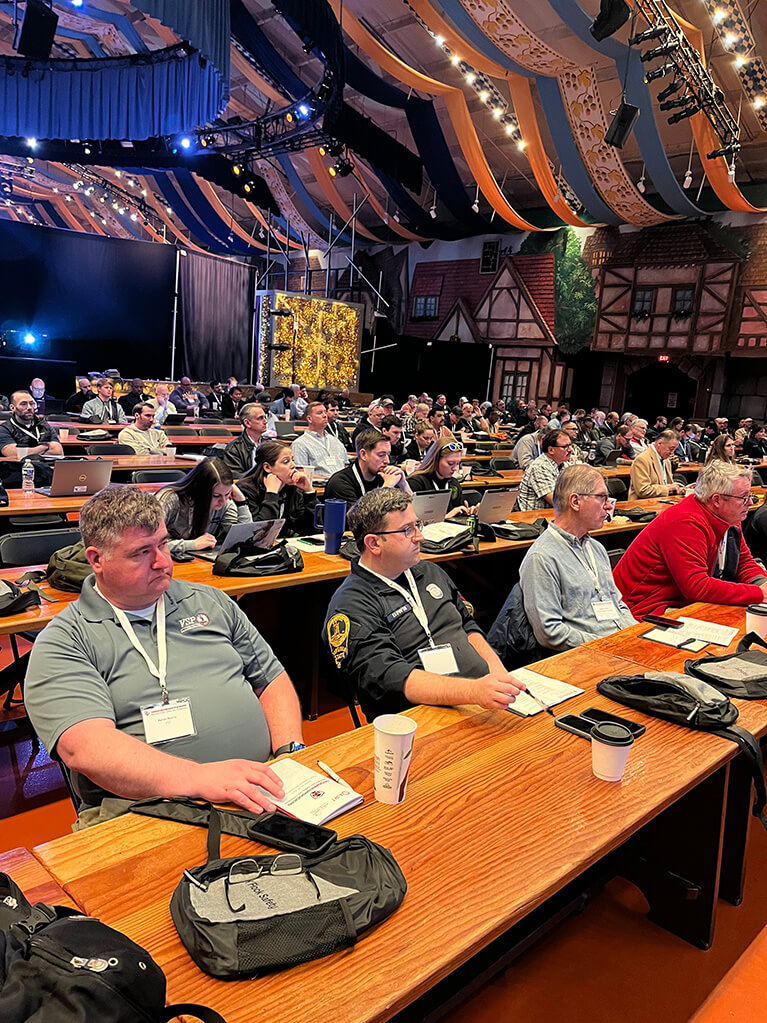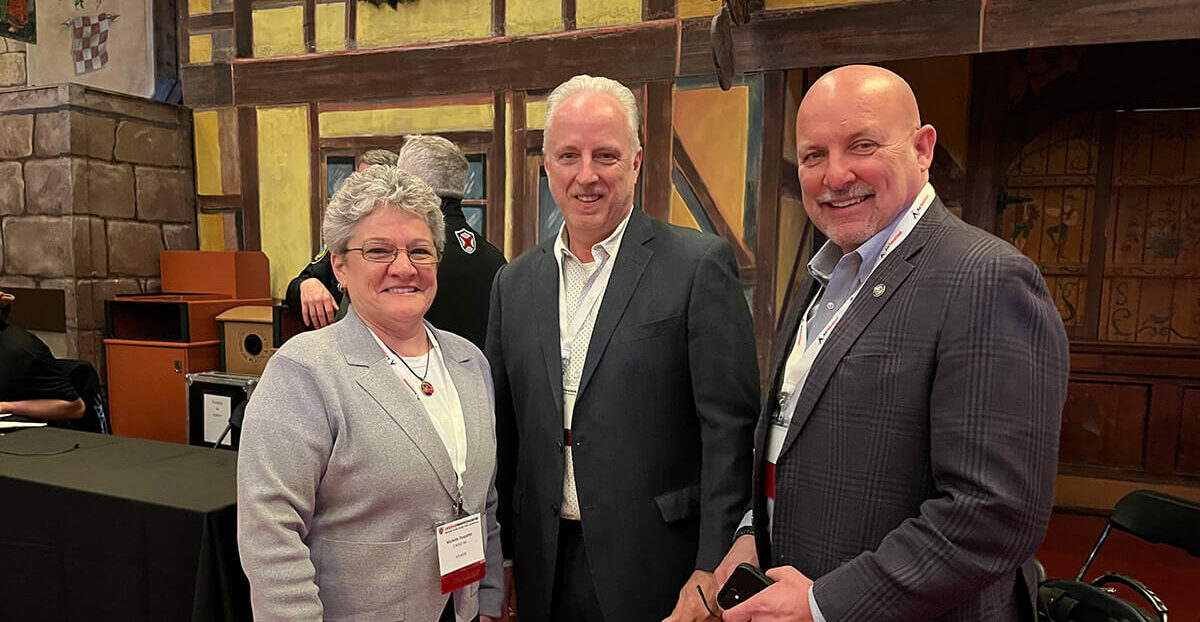The Federal Aviation Administration (FAA) has been actively working to enhance the capabilities of public safety agencies through drone operations. A panel of agency experts at the recent DRONERESPONDERS National Public Safety UAS Conference highlighted efforts to streamline processes and expand the operational scope of drones in emergency response scenarios. This article dives into three biggest updates from the FAA that are shaping the future of public safety drone operations: the introduction of the Public Safety Organization Shielded Operations Waiver, advancements in Tactical Beyond Visual Line of Sight (TBVLOS) waivers, and the implementation of new Temporary Flight Restrictions (TFRs) for mass gatherings.

Public Safety Organization Shielded Operations Waiver
The FAA designed the Public Safety Organization Shielded Operations Waiver to Part 107 operations to allow public safety agencies to conduct critical drone missions with fewer operational restrictions.
According to John Meehan, FAA Air Safety Analyst, its a “combination waiver” that enables Beyond Visual Line of Sight (BVLOS) operations within one statute mile of the Remote Pilot in Command (RPIC) without the need for visual observers. Additionally, it permits operations over people and moving vehicles under specific conditions. This makes it particularly beneficial for agencies like volunteer fire departments and search and rescue organizations that do not qualify for Public Aircraft Operations (PAO) under Part 91.
To qualify for this waiver, drones must be equipped with safety features such as anti-collision lights, propeller guards or a parachute recovery system. Meehan emphasized the importance of these safety measures, noting that there have been 15 collisions between manned aircraft and drones, often due to the pilot not seeing the drone in time. He recommended using anti-collision lights even in daylight to increase UAS visibility to general aviation pilots.
The streamlined process should prove especially beneficial for public safety agencies. It has reduced the complexity of applying for these waivers as well as the time required to obtain necessary approvals – in some cases, from “up to several months” to just a few weeks. By simplifying the application process, the FAA hopes to facilitate quicker access to airspace, which can be lifesaving in emergency situations.
DRONERESPONDERS has issued a helpful guide to aid agencies in applying for these waivers.
Tactical Beyond Visual Line of Sight (TBVLOS) Waivers
TBVLOS grant first responders temporary permission to fly BVLOS during extreme emergency situations so drones can be deployed quickly in critical scenarios. To obtain a TBVLOS waiver, public safety agencies must operate under a Certificate of Authorization (COA) or Waiver, which is typically used for more complex drone operations.
The operational limitations of these TBVLOS waivers include restrictions on flying more than 1,500 feet away from the pilot and no higher than 50 feet above or greater than 400 feet laterally of the nearest obstacle.
This updated Part 91 waiver process, specifically relating to Parts 91.113 and 91.119, involves a structured approach with two key “gates” that applicants must pass through. These gates are designed to ensure that only eligible organizations can obtain the waiver, which is attached to an airspace authorization.
First Gate: Statutory Criteria
The first gate involves determining whether the applicant meets the statutory criteria in 49 USC 40102(a)(41) for the waiver. This includes assessing whether the organization is a political subdivision or meets other specific statutory requirements defined in this law. For example, the criteria might include being a government entity as defined by relevant statutes.
Second Gate: Public Safety Organization Definition
The second gate requires the applicant to be a public safety organization as defined by Congress in the latest FAA Reauthorization Act. This definition is important because it narrows down the eligibility to only organizations that are specifically recognized for public safety roles, such as fire departments or police departments. The mayor’s public relations office, for instance, would not qualify under this definition.
Expedited Process with Checklist
Once both gates are passed, the waiver application can proceed through an expedited process. This process includes using a checklist to ensure that all necessary information is provided. The checklist helps streamline the application process by making it clear what documentation and information are required. The use of a checklist is intended to reduce the turnaround time for waiver approvals, making it faster for eligible organizations to obtain the necessary permissions.
Application Process
Applicants can apply for this waiver by contacting the FAA through specific channels, such as sending to: 9‐UAS‐91.113Waivers@faa.gov. The process is evolving, and the FAA continues to refine its procedures to make them more accessible and efficient. The FAA has issued a Guide for TBVLOS which applicants should follow.

New Temporary Flight Restrictions (TFRs) for Mass Gatherings
The FAA has introduced a new category of Temporary Flight Restrictions (TFRs), specifically designed for mass gatherings. TFRs are regulatory measures imposed by the FAA to ensure safety and security in specific airspace areas. Authorized by Congress in the latest FAA Reauthorization Act, these new mass gathering TFRs provide event organizers with additional airspace protections by allowing them to request temporary drone restrictions.
For events such as mass gatherings, organizers can request a TFR. This is typically done in advance to ensure that the airspace is secured for the duration of the event. According to Kerry Fleming, Manager of the FAA’s Systems Operation Support Center (SOSC), TFRs for mass gatherings were introduced to provide organizers with additional airspace protections.
For such major events, TFR requests should generally be submitted at least 45 days in advance. The request is reviewed by the FAA’s Airspace and Rules Group. They assess the need for the TFR based on factors such as airspace impact and security requirements. If approved, the TFR is issued, and details are communicated through Notices to Airmen (NOTAMs, formerly Notices to Air Missions).
Fleming highlighted the importance of coordination in managing airspace access, especially during large events. When these restrictions apply to large public events, public safety agencies can still gain access via the Special Government Interest (SGI) process. This ensures that critical operations are not hindered by these restrictions. As Fleming noted, public safety agencies must coordinate with local authorities as well as the FAA to ensure access when necessary.
Learn more about TFRs here.
Streamlining, Improving and Expediting
Overall, the FAA’s recent developments in public safety drone operations reflect a concerted effort to enhance the capabilities of emergency responders. By introducing new waivers and TFRs, the FAA continues to facilitate more effective and efficient use of drones in critical scenarios. These advancements not only improve response times and situational awareness but also underscore the FAA’s commitment to paving the way for drones to become an integral part of emergency response strategies across the country.
Yet challenges still remain in navigating complex regulatory processes. The FAA has acknowledged these challenges and continues to actively work to streamline approvals and improve communication. While manual processes still exist for humans to review applications and to assess risk levels, the goal is to ultimately automate these processes.
Until then, the FAA footstomped the importance of using proper terminology when submitting any application, to avoid confusion and delays. Leverage the available resources, call the FAA’s experts early and often and submit applications as soon as possible. In the end, time spent up front on a complete and accurate submission will pay great dividends in the long run in terms of more efficient operations to support the public…and save lives.
By: Dawn Zoldi

